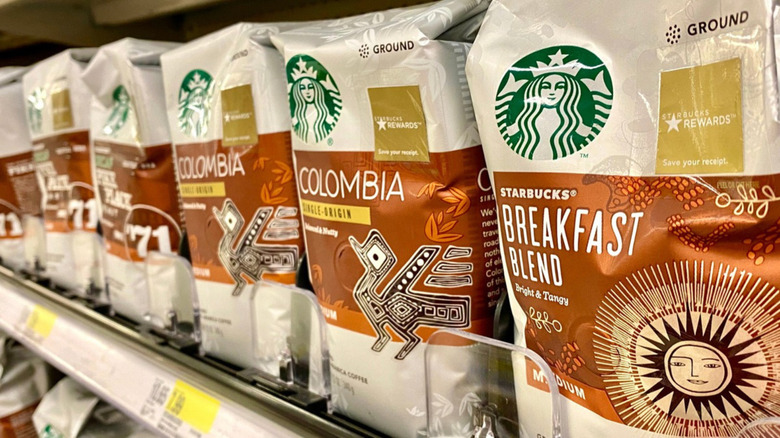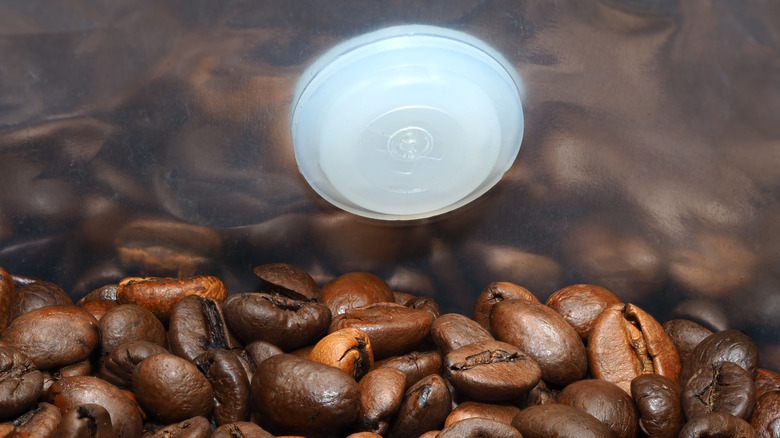The Science Behind Why Coffee Bags Have Holes
Coffee lovers everywhere have done it at least once. Meandering down the coffee aisle at the grocery store, you decide to try a new specialty brand for your morning brew. And with so many different and tempting types of coffee available out there, it can be hard to choose one that you might like. You pick up a few bags and give them a good squeeze, inhaling the fresh aromas that seep out of the small hole on the front. The average coffee drinker might think of these slits surrounded by plastic rings as the perfect way to take a measured whiff before buying. However, connoisseurs of the java world know that there's a science behind those little openings, which are designed to keep the coffee inside at peak freshness.
According to La Colombe Coffee Roasters, "oxygen, moisture, and light are all things that absolutely kill fresh-roasted coffee." Now you may be thinking that, if this is true, then why are there holes placed on coffee bags in the first place? Won't it expose the beans to oxygen and make the coffee go stale sooner? Even though it may just look like just a hole perfect for smelling the coffee, the secret is that it's actually a one-way valve that works to preserve the beans and extend a bag's shelf life (via BeanFruit Coffee Company). Here's how it works.
Degassing holes on coffee bags are meant for releasing CO2
After coffee is harvested and the beans are darkened through the roasting process, the beans undergo a chemical reaction that releases carbon dioxide continuously. During the degassing period, carbon dioxide seeps out so the beans can remain fresh and flavorful, per Better Homes & Gardens. Here's where that handy valve on coffee bags becomes necessary. Without it, the trapped carbon dioxide "would build up within the bag, causing the coffee beans to become stale and lose their flavor over time," Acquired Coffee founder Monica Russel explained to Reader's Digest. We can't let all those precious coffee beans go to waste, so the specialized bags act as a filter so they can de-gas naturally. It's quite helpful for avoiding sudden bag explosions, too.
At a local coffee shop, it's pretty normal not to see one of these valves on the more gourmet bags. This just means you need to be prepared to enjoy the whole bag in under a week. Maybe plan to purchase it when you need the extra caffeine to get you through a particularly stressful week you've got coming up. If you snag a coffee bag without that special valve and can't quite finish it in a short time frame, toss it in an airtight container either at room temperature or in the fridge for a few days longer at most (via The Atlantic). Though, bags with degassing valves should keep you and your beans happy for longer.

